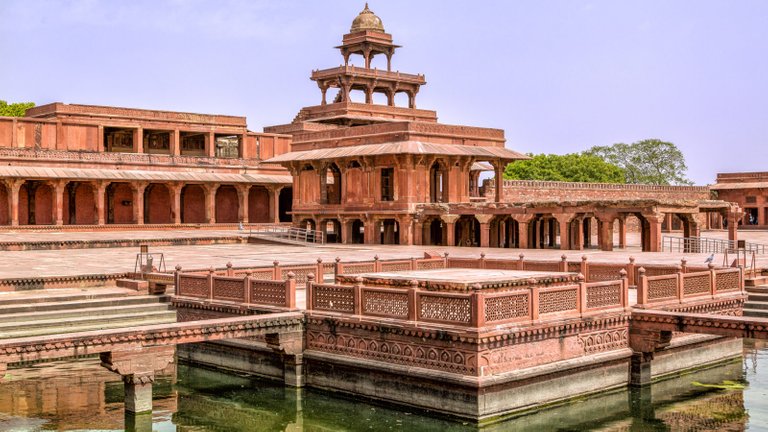 Navaratnas, better known as the nine jewels. The city was abandoned when the reservoir by which is was built dried up and little of it remains in contemporary times. However, the famed Jama Masjid still stands strong and welcomes visitors. The red sandstone buildings, peppered with marble, dominate the landscape, reminders of an era that revived the splendour of the Persian court, brilliantly fusing Mughal architecture with the personal touch of the Emperor Abkar.
Navaratnas, better known as the nine jewels. The city was abandoned when the reservoir by which is was built dried up and little of it remains in contemporary times. However, the famed Jama Masjid still stands strong and welcomes visitors. The red sandstone buildings, peppered with marble, dominate the landscape, reminders of an era that revived the splendour of the Persian court, brilliantly fusing Mughal architecture with the personal touch of the Emperor Abkar.
Fatehpur Sikri is an ancient abandoned city near Agra that sprawls across 60 hectares (148 acres). Built in the second half of the 16th century by Emperor Akbar, the city served as his capital for about a decade. Known as the city of victory, it was raised on the south-east banks of a man-made lake along a sloping plane of ridges in the Vindhyan Hills. Fatehpur Sikri is located just an hour outside of Agra and remains one of the finer examples of Mughal architecture, featuring a combination of Islamic, Persian, Turkish and South-Asian architecture with a decided Hindu influence.
A testament to Emperor Akbar’s vision, the city was originally designed in honour of a Sufi saint, Salim Chishti. The city’s various monuments and shrines were created in the same distinct architectural style and include one of the largest mosques in India, the Jama Masjid. The structure took fifteen years to be built and lies between a succession of royal palaces, bejewelled harems, stately courts, noble private quarters and a host of other service buildings. The imposing gateways and stunning fort palace once housed the secrets of the Emperor Akbar and his prominent courtiers, the
Hi! I am a robot. I just upvoted you! I found similar content that readers might be interested in:
https://www.andbeyond.com/experiences/asia/india/north-india/agra/tour-of-fathehpur-sikri/